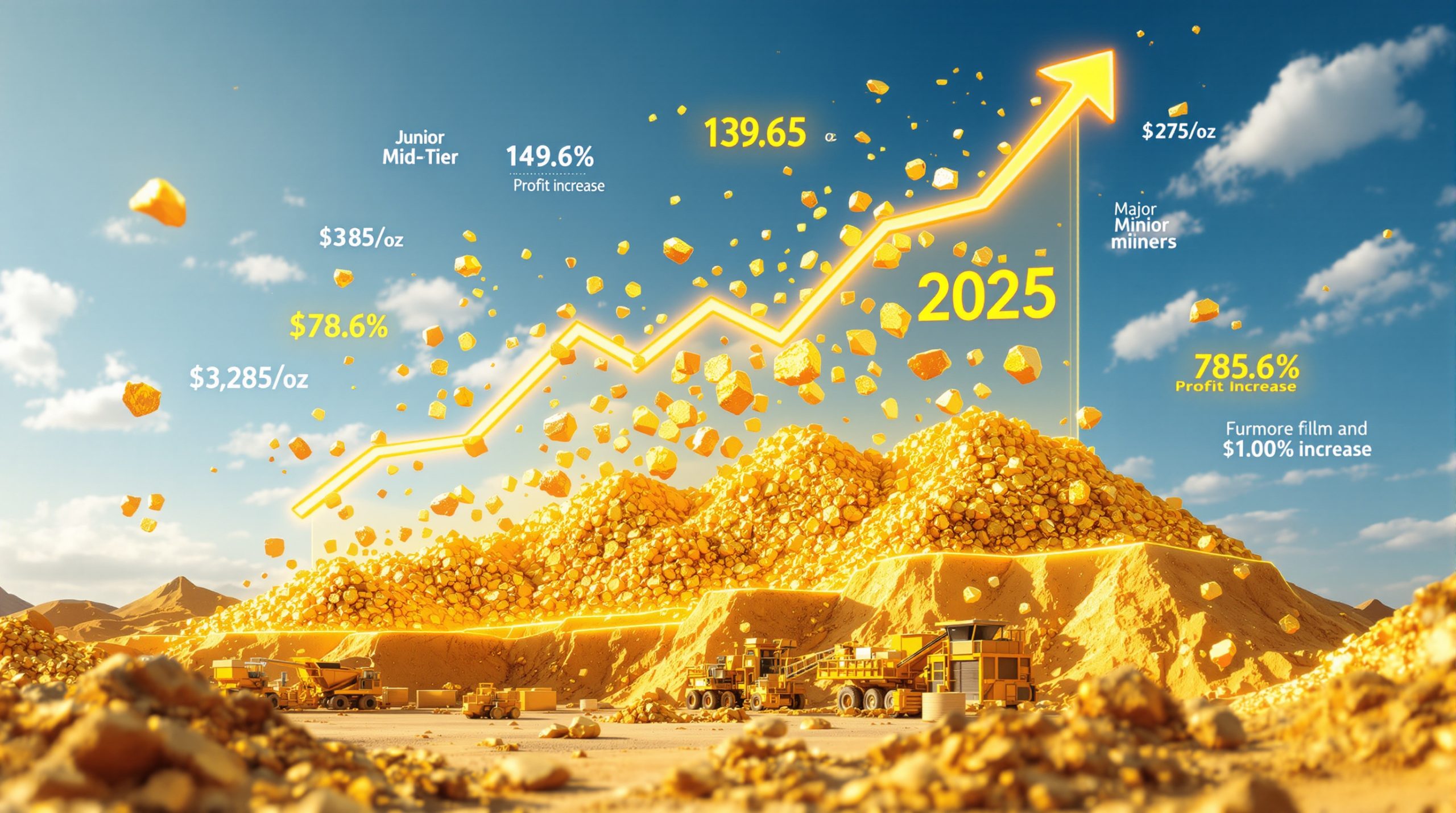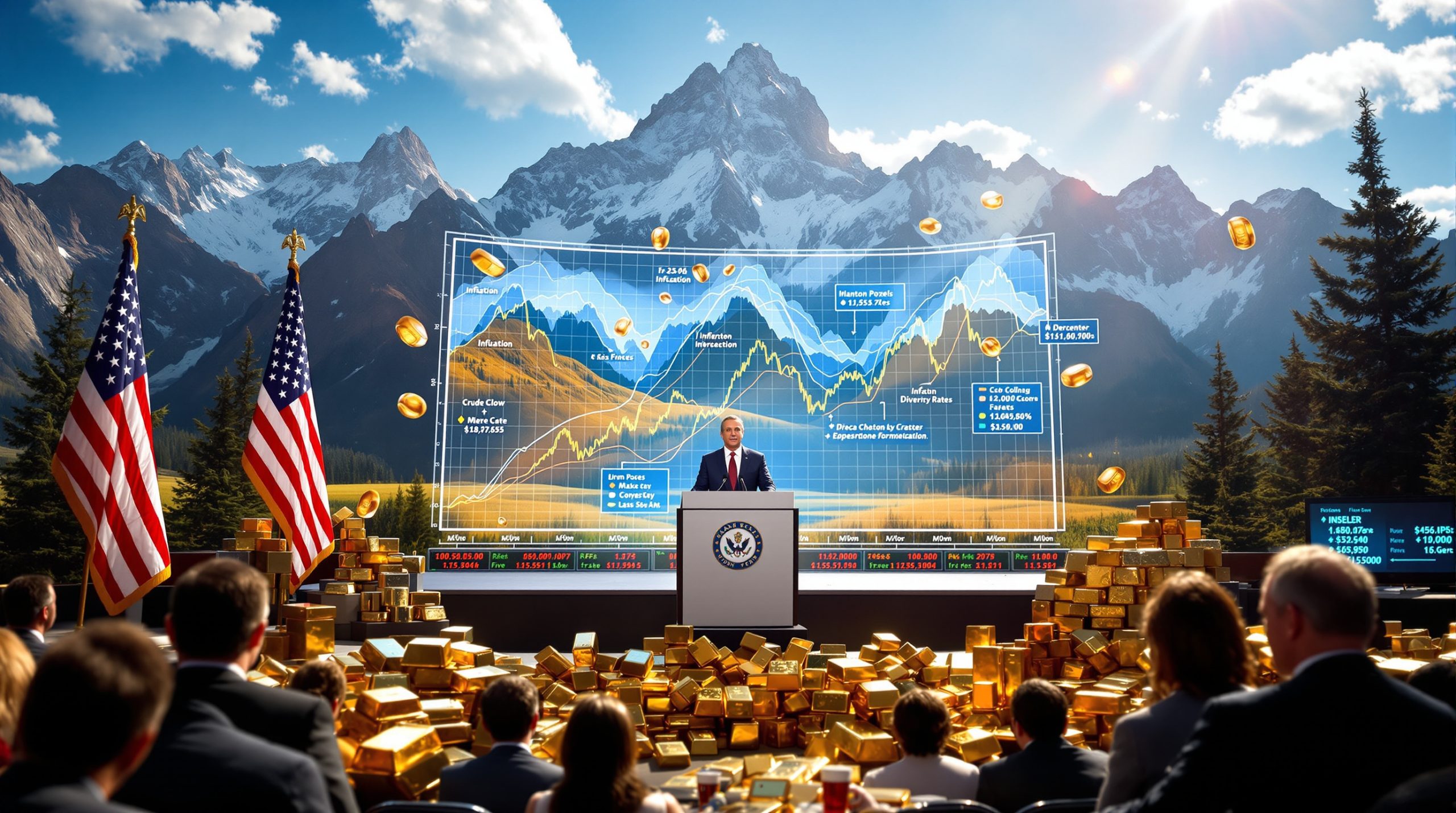What Are Rare Earth Minerals and Why Do They Matter?
The Critical Components Powering Modern Technology
Rare earth minerals, despite their name, aren't particularly rare in the Earth's crust. What makes them special—and strategically vital—is their unique electronic and magnetic properties that enable countless modern technologies we rely on daily.
These 17 elements on the periodic table (including neodymium, dysprosium, terbium, and praseodymium) possess exceptional magnetic strength, thermal stability, and conductivity characteristics that make them irreplaceable in high-tech applications.
The smartphone in your pocket contains multiple rare earth elements—from neodymium magnets in speakers to europium and terbium phosphors that create vibrant screen colors. Electric vehicles rely heavily on these minerals, with up to 2 kilograms of rare earth elements in their motors. A single F-35 fighter jet contains nearly 420 pounds of rare earth materials across its various systems.
"Rare earths aren't just another resource in global supply chains—they're the backbone of both civilian technology and military superiority in the 21st century." — Dr. Julie Klinger, author of Rare Earth Frontiers
What sets rare earth minerals apart from other critical resources is their dual role in both consumer products and advanced military systems. Their irreplaceability in precision-guided weapons, radar systems, and communication equipment makes them a matter of critical minerals and energy security, not just economic importance.
China's Dominant Position in the Global Supply Chain
China's overwhelming control of approximately 85% of global rare earth processing capacity creates a precarious situation for technology manufacturers worldwide. This dominance didn't happen overnight—it resulted from decades of strategic investment while other nations neglected this sector.
Beginning in the 1980s, China systematically developed its rare earth capabilities through:
- State-directed investment in mining technology
- Generous subsidies for processing facilities
- Looser environmental regulations that lowered extraction costs
- Acquisition of foreign rare earth intellectual property
By the early 2000s, China's strategy had succeeded in driving most non-Chinese competitors out of the market. The Mountain Pass mine in California—once the world's largest rare earth producer—shut down in 2002, unable to compete with Chinese pricing (though it later reopened under new ownership).
This geographic concentration creates profound supply vulnerabilities that extend beyond simple economics. When a single country controls the processing of materials essential to everything from wind turbines to missile guidance systems, it introduces geopolitical risk into global supply chains.
The environmental cost of this concentrated production is also significant. The massive tailings pond at Baotou, China—a toxic lake of radioactive waste and processing chemicals—serves as a stark reminder of why other countries have been reluctant to develop their own rare earth industries despite having substantial raw deposits.
How Did Rare Earth Minerals Become a Trade War Weapon?
The Evolution of Export Controls as Strategic Leverage
China first demonstrated the strategic potential of rare earth minerals as a geopolitical lever in 2010, when it abruptly cut export quotas by 40% and temporarily halted shipments to Japan during a territorial dispute over the Senkaku/Diaoyu Islands. Prices for some rare earth elements surged by 400% in the aftermath.
This initial flexing of rare earth muscle wasn't just about bilateral tensions with Japan—it served as a wake-up call to the entire world about China's willingness to use its resource dominance as diplomatic leverage.
Export controls function differently than traditional tariffs in both implementation and impact. While tariffs primarily generate revenue and protect domestic industries by making imports more expensive, export controls directly restrict the flow of goods leaving a country.
The World Trade Organization (WTO) ruled against China's 2010-2014 export quotas in a landmark case, finding they violated international trade rules. However, this hasn't prevented China from implementing more sophisticated mechanisms that achieve similar results while remaining technically compliant with WTO regulations.
"What makes rare earth export controls particularly effective is that they target high-value manufacturing chains at their most vulnerable point, creating cascading disruptions far greater than the value of the minerals themselves." — International Trade Commission report, 2023
The timeline of escalating restrictions reveals a pattern of increasing sophistication:
- 2010-2014: Simple export quotas that were eventually ruled WTO non-compliant
- 2015-2020: Environmental regulations that limited production
- 2021-2023: Enhanced export licensing requirements
- 2024-present: Comprehensive "supply chain security" measures including anti-smuggling initiatives
Strategic Minerals as National Security Concerns
The defense applications of rare earth minerals transform what might otherwise be an economic dispute into a matter of national security. Modern militaries depend on these materials for precision weapons, surveillance systems, and communications equipment.
The U.S. Department of Defense has identified over 300 different weapons systems that rely on rare earth components, including:
- Precision-guided munitions
- Laser targeting systems
- Satellite communications
- Radar technology
- Night vision equipment
- Stealth technology coatings
The F-35 Joint Strike Fighter program is particularly vulnerable, requiring significant quantities of rare earth elements for its radar systems, electronic countermeasures, and power systems. Each F-35 contains approximately 920 pounds of rare-earth-based components when accounting for the entire supply chain.
This military dependence creates a strategic asymmetry in trade negotiations. While civilian supply chains might adapt or absorb higher costs, defense systems face more rigid specifications and qualifying new suppliers can take years due to stringent performance and reliability requirements.
What Impact Do Export Restrictions Have on Global Industries?
Manufacturing Disruptions Across Supply Chains
When rare earth supply chains face restrictions, the impacts cascade far beyond the immediate buyers of raw materials. A 2023 industry analysis by Benchmark Mineral Intelligence found that a 30-day disruption in rare earth supplies can cause manufacturing delays lasting up to 4-6 months due to the complex, just-in-time nature of global production networks.
The electronics manufacturing sector feels these disruptions acutely. A 2-week delay in obtaining neodymium magnets can force production line pauses costing manufacturers up to $3 million per day in idle capacity and contractual penalties.
Automotive manufacturers, particularly those with significant electric vehicle production, face even more severe challenges. Each electric vehicle typically contains 1-2 kg of rare earth elements, primarily in their motors. Industry analysts estimate that even a 5% reduction in rare earth availability could delay EV production by up to 140,000 vehicles annually across global manufacturers.
These disruptions create ripple effects throughout the economy:
- Component suppliers face costly production stoppages
- Manufacturers must redesign supply chains on short notice
- Distributors struggle with inventory management
- Retailers face product shortages and missed sales opportunities
- Consumers encounter higher prices and longer wait times
Case Study: Audio Equipment Manufacturer's Challenges
A particularly illustrative example emerged in early 2025 when a major U.S. audio equipment manufacturer reported significant delays in receiving export approvals for rare earth magnets used in its speaker systems, despite these being designated for "non-sensitive commercial applications."
According to internal company documents cited by the South China Morning Post:
"Delays in export approvals would disrupt our production and adversely affect downstream vehicle manufacturers, including potential production stoppages. We anticipate that even under the recently announced trade truce, approval timelines will remain unpredictable."
This manufacturer's components were specified in designs for multiple vehicle brands, creating a multiplier effect where a single supply disruption affected production schedules across numerous automotive assembly plants. Within three weeks of the initial delay, at least four major automotive plants reported adjusting production schedules to account for the component shortages.
What makes this case particularly noteworthy is that it occurred despite the officially announced "90-day truce" in the broader trade dispute. The disconnect between high-level trade agreements and the practical reality of export approvals highlights how conventional trade deals often fail to address non-tariff barriers effectively.
How Are Companies Responding to Supply Chain Vulnerabilities?
Diversification Strategies and Alternative Sourcing
Forward-thinking companies are pursuing multiple strategies to reduce their vulnerability to rare earth supply disruptions, with varying degrees of success and implementation timelines.
Mining development outside China represents the most direct approach but faces significant challenges. Currently, rare earth mining occurs in several countries including Australia, Myanmar, Brazil, and the United States, but processing capacity remains overwhelmingly concentrated in China.
Lynas Corporation, the largest non-Chinese rare earth producer, has invested $500 million in expanding its processing capabilities in Malaysia and constructing a new facility in Texas scheduled to come online in late 2025. This facility aims to process 5,000 tons of rare earth products annually—still only a fraction of global demand but a significant step toward diversification.
Recycling initiatives show growing promise, with several technology companies investing in "urban mining" of electronic waste. Apple has developed a specialized robot called "Daisy" capable of recovering rare earth elements from discarded iPhones. The company reported recovering over 98% of the rare earth elements in its latest iPhone models for reuse.
The recycling economics remain challenging, however:
- Current recovery rates average 35-60% of contained rare earths
- Processing costs exceed virgin material prices for most applications
- Collection logistics present significant barriers
- Quality control issues persist for some high-specification applications
Research into substitute materials has accelerated dramatically, with global R&D investment in rare earth alternatives reaching $1.2 billion in 2024. Notable successes include:
- Iron-nitride magnets showing 80% of the performance of neodymium magnets for certain applications
- Cerium-based catalysts replacing more scarce elements in some chemical processes
- Advanced motor designs that reduce or eliminate rare earth requirements
Stockpiling and Inventory Management Approaches
Many companies have moved from just-in-time inventory practices to strategic stockpiling of critical rare earth materials. A 2024 survey of electronics manufacturers found that average inventory holding periods for rare earth components increased from 30 days in 2020 to 120 days by the end of 2024.
This stockpiling creates significant financial burdens:
- Increased capital tied up in inventory (estimated at $8.3 billion across major manufacturers)
- Additional storage and security costs
- Risk of inventory devaluation if prices fluctuate
- Higher insurance premiums for concentrated valuable materials
Defense contractors face even more intensive stockpiling requirements. The Pentagon's Strategic Materials Security Program now mandates minimum 180-day supply reserves for critical rare earth components used in defense systems, with some contractors voluntarily maintaining up to 2-year supplies for the most critical materials.
"We're seeing a fundamental shift from efficiency-optimized supply chains to resilience-optimized ones. Companies are willing to accept higher costs to guarantee continuity of operations." — McKinsey Global Institute, 2024 Supply Chain Resilience Report
Strategic partnerships have emerged as another approach, with manufacturers seeking preferential supply agreements with miners and processors. Tesla signed a long-term agreement with MP Materials in 2023 to secure rare earth magnets from its California operation, while Apple has invested directly in sustainable rare earth mining ventures to secure priority access.
What Does China's Enhanced Oversight Mean for Global Trade?
Analysis of Recent Export Control Mechanisms
China's approach to rare earth export controls has evolved from blunt instruments like quotas to a sophisticated, multi-layered system that maintains technical WTO compliance while achieving similar strategic objectives.
The anti-smuggling initiatives launched in 2024 represent a significant escalation, with Chinese customs authorities reporting a 40% reduction in illegal rare earth exports within the first six months. These efforts include:
- Enhanced border inspection technologies
- Stricter documentation requirements
- Chemical fingerprinting of materials to track origins
- Severe penalties for violators (up to 10 years imprisonment)
- International cooperation agreements to prevent third-country transshipment
China has also implemented a comprehensive supply chain monitoring system using blockchain technology to track rare earth materials from mine to market. This system requires all legitimate exporters to register each transaction on a government-monitored blockchain, creating unprecedented visibility into the movement of these strategic resources.
The stated purpose of these measures is to prevent environmental damage from illegal mining and ensure tax compliance, but the secondary effect has been tighter control over the global supply. Each link in the blockchain requires government verification, creating potential chokepoints where approvals can be delayed.
Regulatory Compliance Challenges for Multinational Companies
Companies seeking to export rare earth materials from China now face a labyrinthine approval process that includes multiple government agencies and extensive documentation requirements. A typical export approval now requires:
- Environmental compliance certification
- Production quota authorization
- Export license application
- End-user verification
- Technical review for potential dual-use applications
- Supply chain security verification
The timeline for these approvals has expanded from 2-3 weeks in 2020 to 8-12 weeks by early 2025, with some applications experiencing even longer delays for unspecified "additional review."
Multinational corporations have responded by creating dedicated compliance teams focusing specifically on rare earth supply chain management. Apple reportedly expanded its supply chain compliance department by 35% in 2024, with much of this growth dedicated to navigating China's rare earth export controls.
Legal and operational adjustments have become necessary, including:
- Restructuring contracts to account for approval uncertainties
- Developing contingency plans for shipment delays
- Establishing secondary suppliers where possible
- Creating redundant supply routes to mitigate disruption risks
- Investing in transparency technologies compatible with Chinese monitoring systems
Will Rare Earth Supply Chains Remain Severed Despite Trade Deals?
The Limitations of Current Trade Agreements
Recent bilateral trade negotiations between the U.S. and China have repeatedly failed to substantively address rare earth export controls, creating a significant gap in global trade governance. The 90-day truce announced in May 2025 focused primarily on traditional tariffs while leaving complex supply chain issues largely unaddressed.
This disconnect stems from several factors:
- Rare earth controls are classified as environmental and security measures, not trade barriers
- Verification mechanisms for compliance are technically complex
- National security exceptions in WTO rules provide legal coverage
- Both sides prioritize more visible trade issues in negotiations
Analysis of the seven major U.S.-China trade agreements since 2018 reveals that none contained specific, enforceable provisions regarding rare earth minerals beyond vague commitments to "stable supply chains." This pattern suggests that even as visible tariffs rise and fall with diplomatic cycles, the underlying rare earth restrictions may persist indefinitely.
Former U.S. Trade Representative Katherine Tai acknowledged this reality in April 2025:
"Traditional trade agreements are poorly equipped to address sophisticated non-tariff barriers like those affecting critical minerals. We need new frameworks that specifically address supply chain security and strategic resource access."
Long-term Outlook for Rare Earth Supply Security
Developing truly resilient rare earth supply chains outside Chinese control requires a complex combination of mining, processing, manufacturing, and recycling capabilities that will take years to establish. Industry experts estimate that creating a fully independent supply chain would require:
- 5-7 years of development time for new mining operations
- $13-18 billion in capital investment for processing facilities
- Significant technological development to match Chinese expertise
- International coordination on environmental standards
Countries pursuing rare earth independence face significant challenges:
| Country | Current Initiatives | Timeline | Key Challenges |
|---|---|---|---|
| USA | MP Materials expansion, DoD investments | 2026-2028 | Processing technology, environmental permits |
| Australia | Lynas Corporation expansion, Australia's strategic reserves | 2025-2027 | Processing capabilities, water usage concerns |
| EU | Rare Earth Magnets Alliance, European CRM facility | 2028+ | Limited domestic resources, high labor costs |
| Japan | Urban mining/recycling focus | Ongoing | Limited volume potential, high energy costs |
| India | Exploration of beach sand deposits | 2027+ | Processing technology, infrastructure limitations |
The potential for future trade negotiations specifically addressing rare earths remains uncertain. China has consistently maintained that its export controls serve legitimate environmental and security purposes rather than being trade restrictions, making them difficult to address through conventional trade mechanisms.
What Are the Economic Implications of Continued Restrictions?
Price Volatility and Cost Pressures
Rare earth market prices have exhibited extreme volatility during trade tensions, with price swings of 300-400% for critical elements like neodymium becoming commonplace. Unlike more established commodity markets, rare earths lack sufficient liquidity and transparency to dampen these fluctuations.
The price of neodymium—essential for permanent magnets—illustrates this volatility:
- 2020 average price: $60/kg
- 2023 peak during trade tensions: $240/kg
- 2024 temporary retreat: $110/kg
- 2025 surge after new restrictions: $195/kg
This price unpredictability creates significant challenges for manufacturers:
- Product pricing becomes difficult when input costs fluctuate dramatically
- Long-term contracts with fixed pricing become untenable
- Investment decisions for new products face heightened risk
- Budget planning for procurement departments becomes guesswork
The cost pass-through to consumers varies significantly by industry. High-end electronics manufacturers have generally absorbed rare earth price increases, with Apple reporting only a 0.8% impact on overall production costs
Want to Capitalise on the Next Major Mineral Discovery?
Rare earths are just one segment of the critical minerals market where early discovery alerts can create significant investment advantages. Discover how Discovery Alert's proprietary Discovery IQ model delivers real-time notifications of significant ASX mineral discoveries, helping you position ahead of the market by visiting https://discoveryalert.com.au/discoveries/ today.




